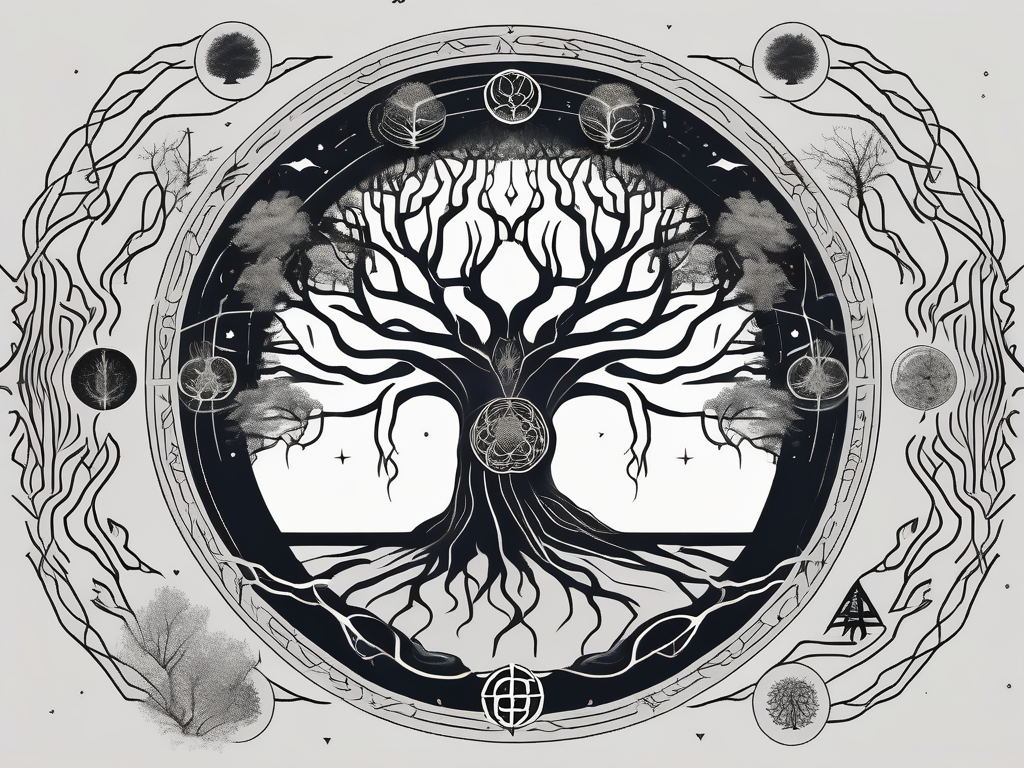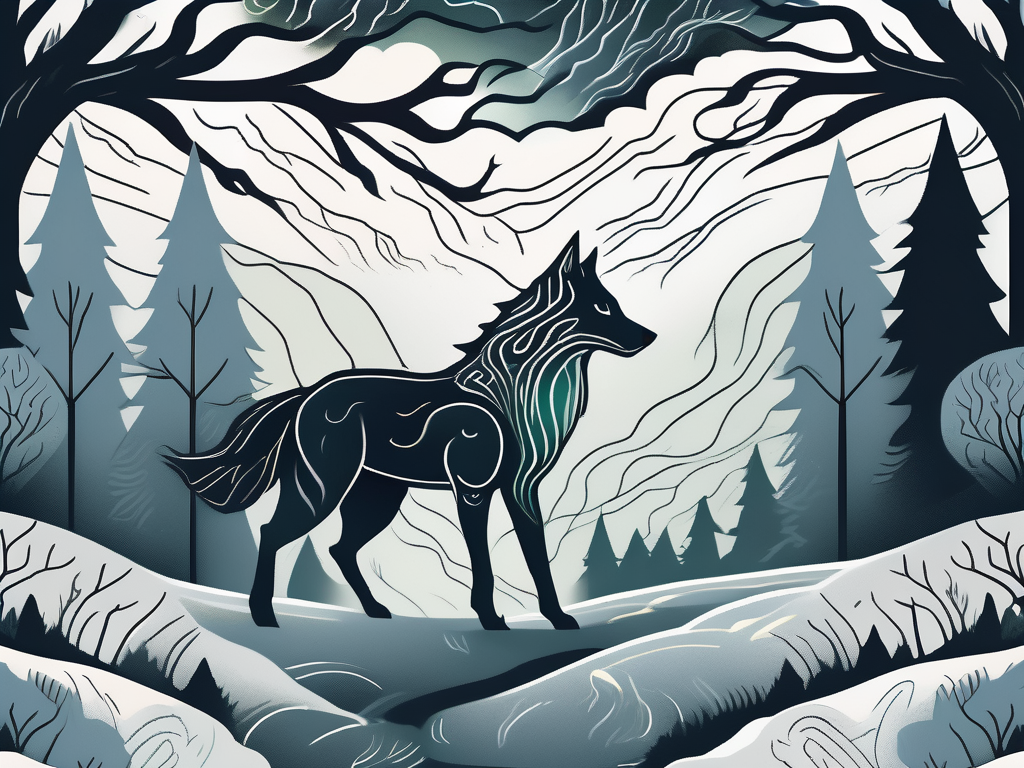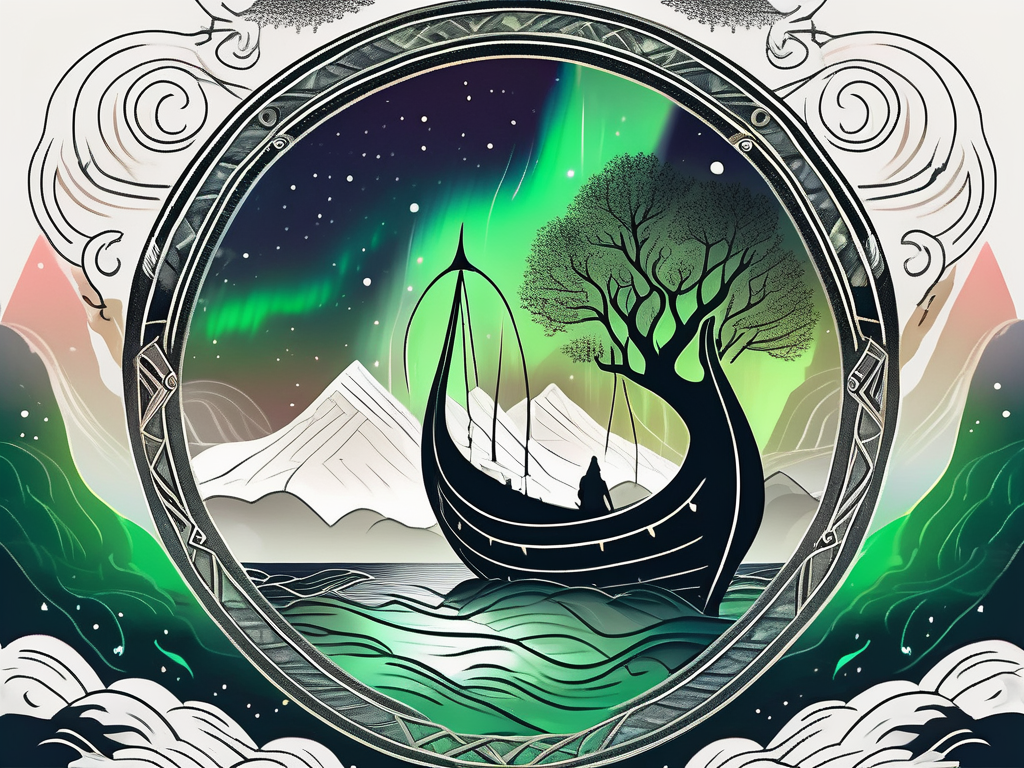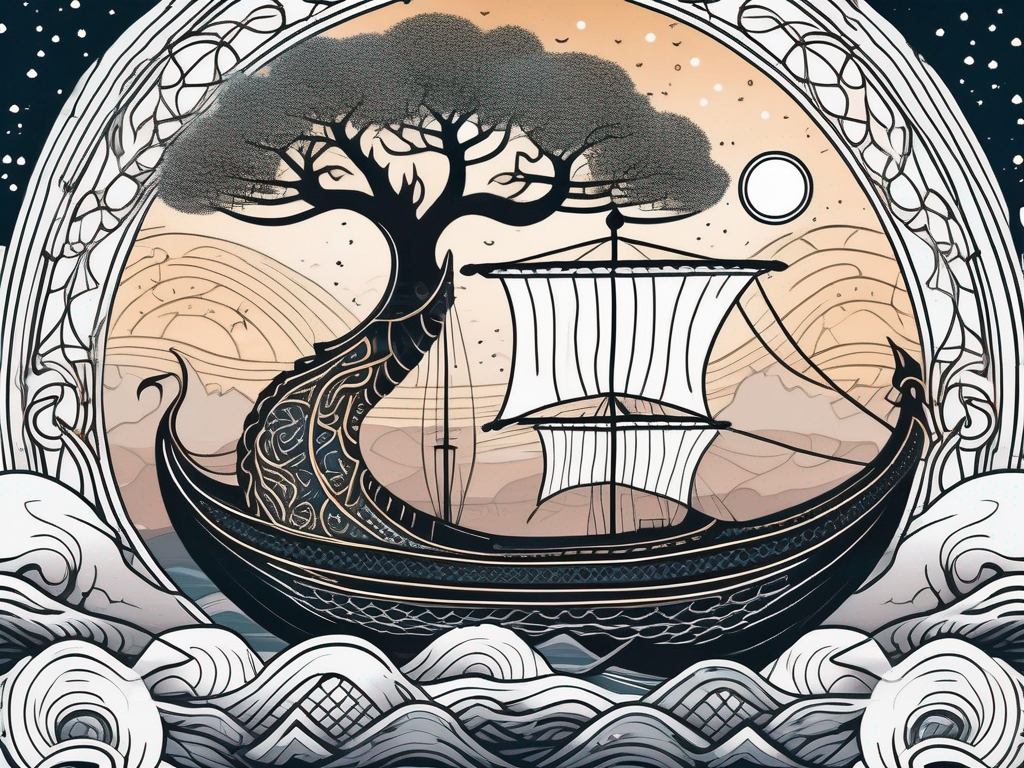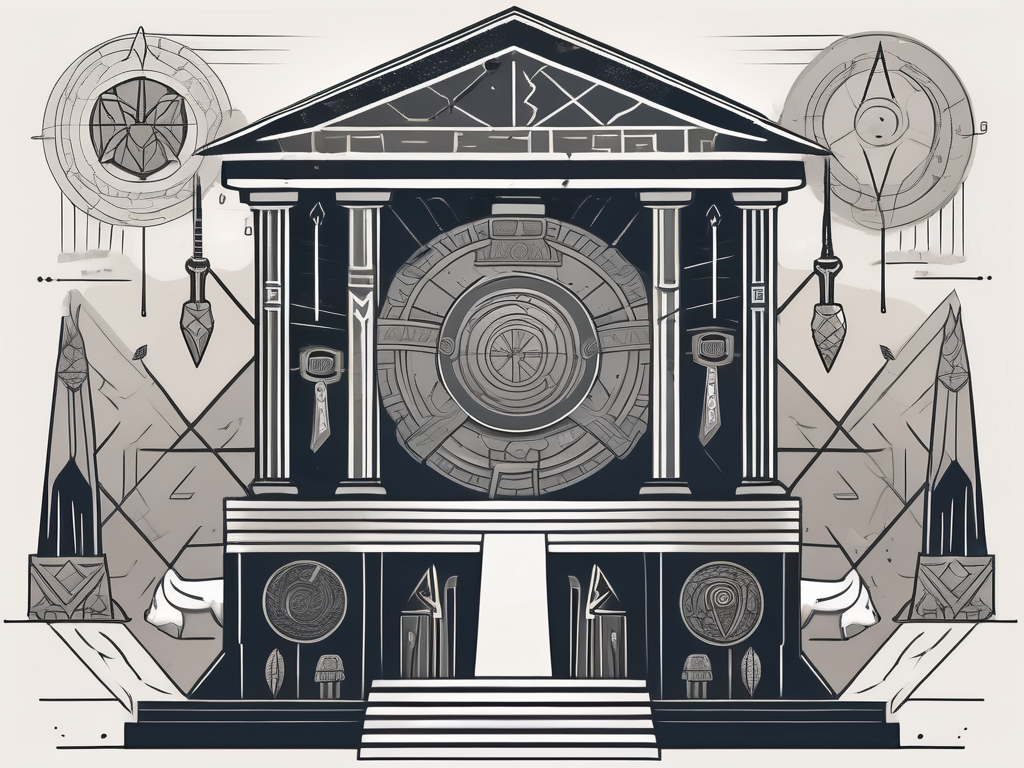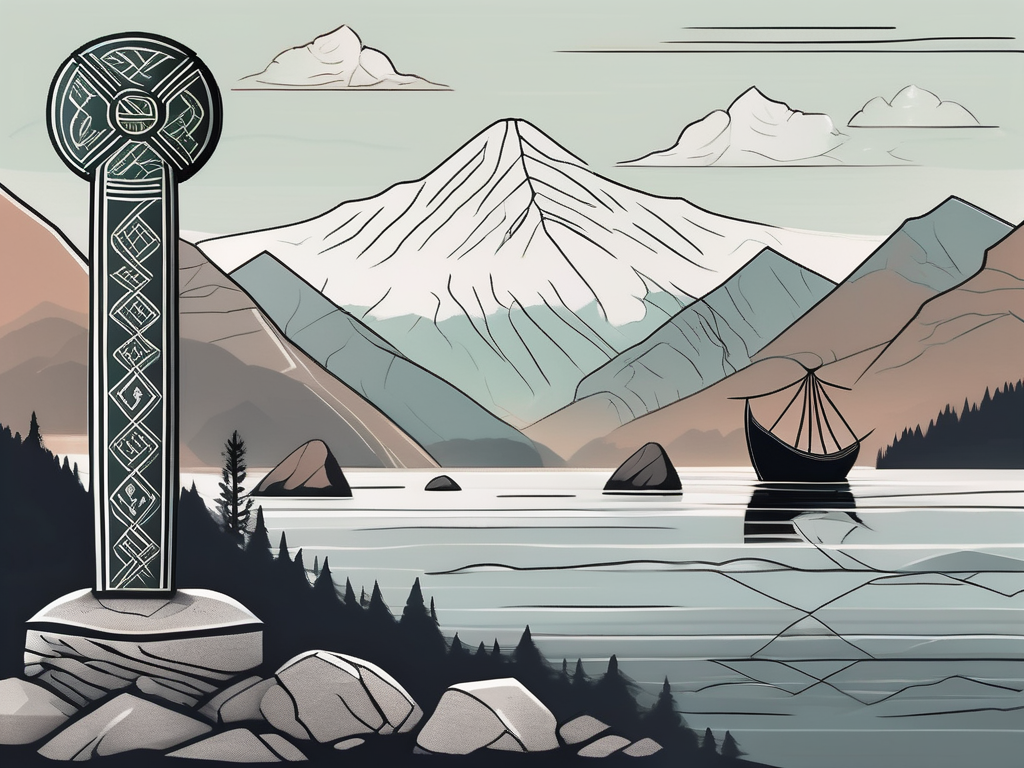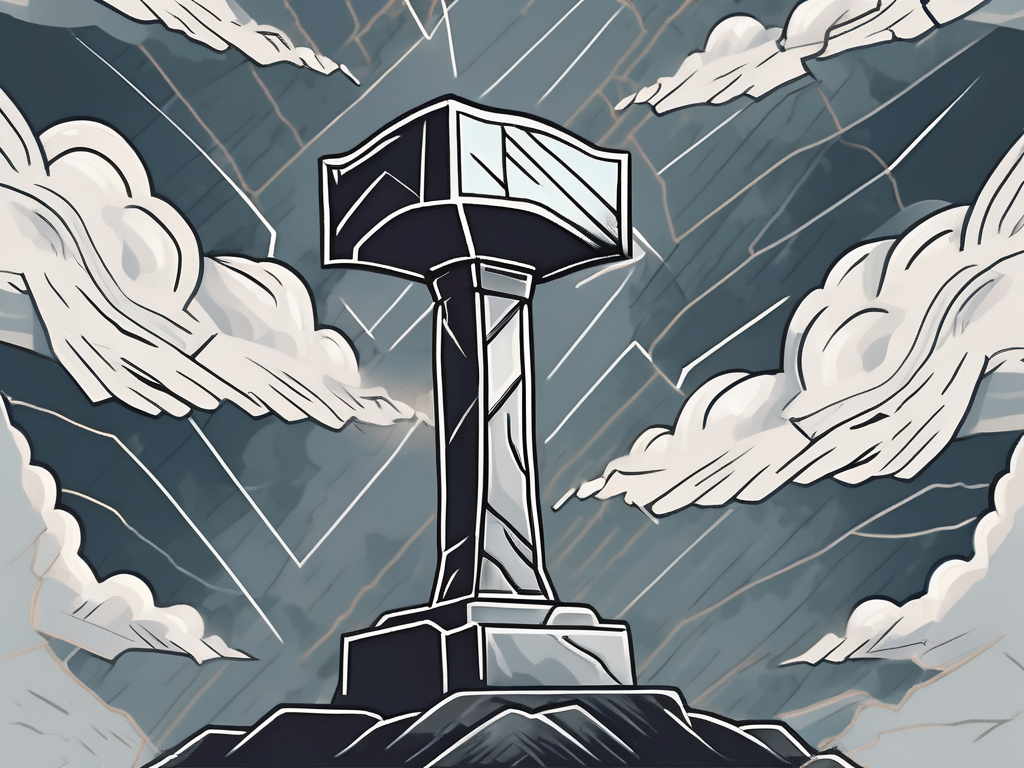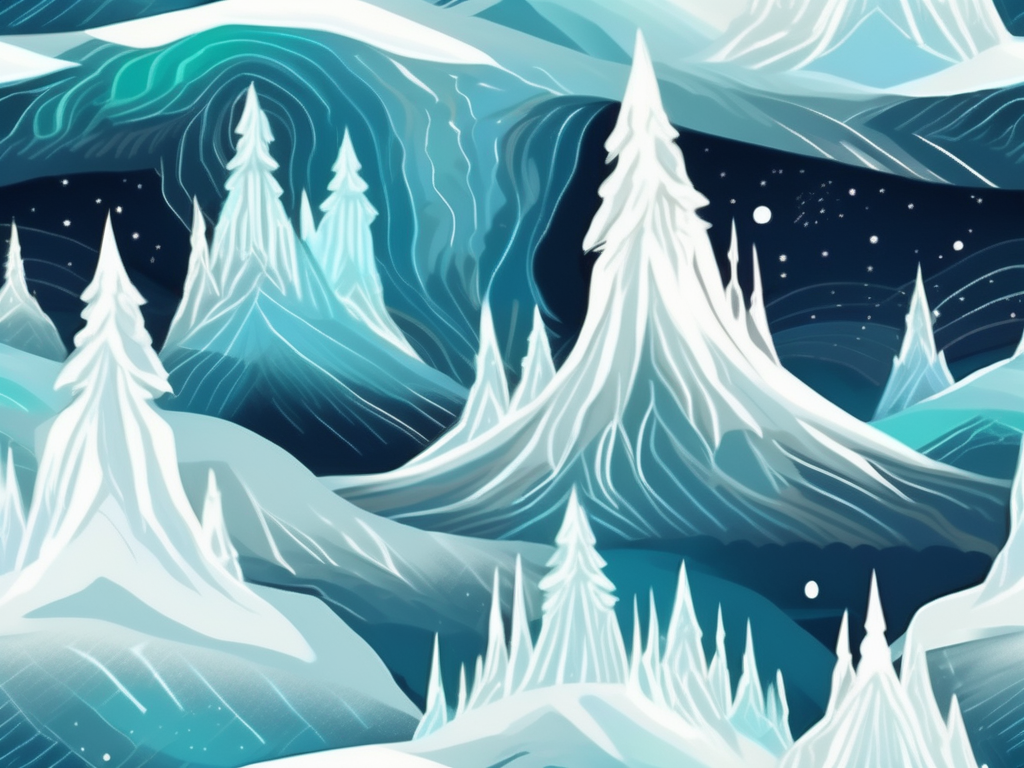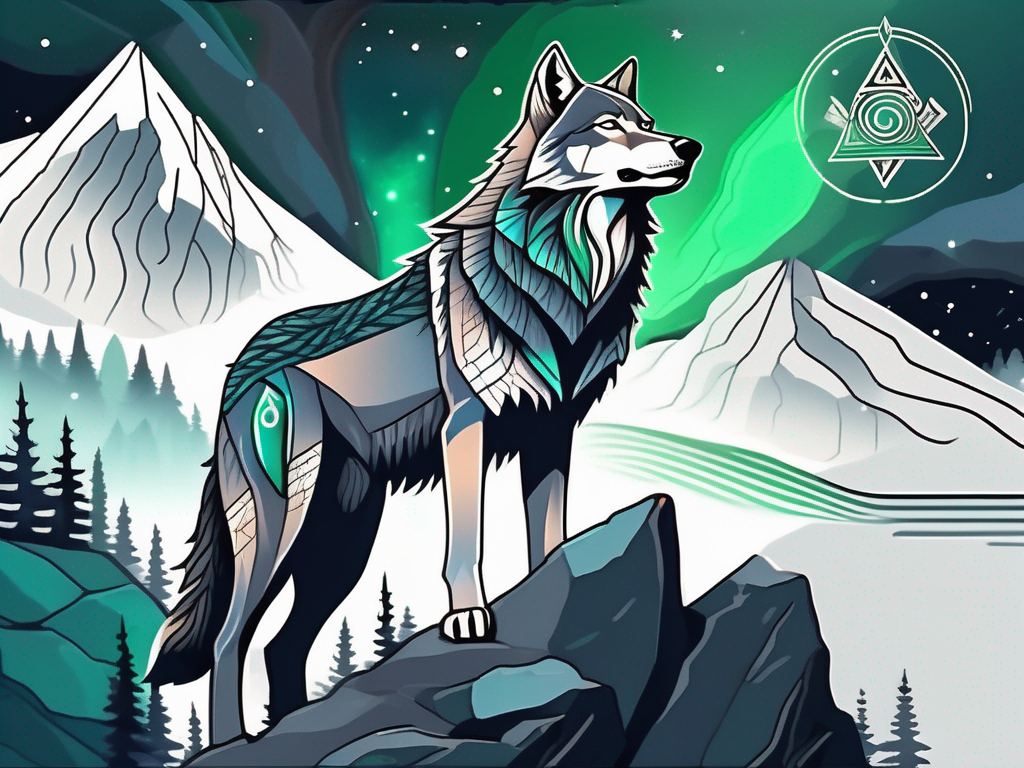Norse mythology is a rich and fascinating collection of stories that provide valuable insights into the beliefs and culture of the ancient Norse people. At the core of this mythology lies the creation story, which lays the groundwork for the intricate web of gods, creatures, and realms that make up the nine worlds of Norse cosmology. By delving into this creation story, we can gain a deeper understanding of the origins of these realms and the forces that shape Norse mythology.
Understanding Norse Mythology
Before we dive into the creation story of the nine worlds, let’s take a moment to appreciate the importance of mythology in Norse culture. Mythology was not just a collection of stories to the Norse people; it was a fundamental part of their identity and worldview. Through mythology, they sought to explain the mysteries of the world around them, define their place within it, and instill a sense of purpose and order in their lives.
Key figures in Norse mythology were revered and emulated, and their stories served as moral and ethical guides for the Norse people. These myths also provided a sense of continuity and connection to their ancestors, bridging the gap between the past, present, and future.
The Norse people believed that their gods and goddesses were not distant and detached beings, but rather active participants in their daily lives. They saw the gods as powerful forces of nature, capable of both great benevolence and destructive wrath. The gods were not infallible; they had flaws and weaknesses just like humans. This human-like quality made them relatable and allowed the Norse people to connect with them on a deeper level.
One of the most prominent figures in Norse mythology is Odin, the Allfather and ruler of Asgard. Odin was not only the god of war and death but also the god of wisdom, poetry, and magic. He was known for his insatiable thirst for knowledge and his willingness to sacrifice himself for the greater good. Odin’s wisdom and cunning were highly respected, and many Norse warriors sought his guidance and protection in battle.
Another important deity in Norse mythology is Thor, the god of thunder and protector of mankind. Thor was known for his incredible strength and his mighty hammer, Mjölnir. He was often depicted as a fierce warrior, battling giants and other mythical creatures to defend the gods and humanity. Thor was also associated with fertility and agriculture, as thunderstorms were believed to bring rain and nourish the earth.
Freya, the goddess of love, beauty, and fertility, was highly revered by the Norse people. She was known for her enchanting beauty and her ability to bring love and passion into people’s lives. Freya was also associated with magic and divination, and she was believed to have the power to shape the destinies of mortals.
These are just a few examples of the rich and complex pantheon of gods and goddesses in Norse mythology. Each deity had their own unique characteristics and played a specific role in the Norse cosmology. The myths and stories surrounding these figures were passed down through generations, ensuring that the Norse people never forgot their roots and the lessons taught by their gods.
So, as we delve into the creation story of the nine worlds, let us remember the profound significance of mythology in Norse culture. It is through these ancient tales that we gain insight into the beliefs, values, and aspirations of a people who found solace and inspiration in the realm of gods and heroes.
The Creation Story in Norse Mythology
At the heart of the Norse creation story lies the void of Ginnungagap. This primordial emptiness contained two contrasting realms, Muspelheim and Niflheim, each with its own unique characteristics and inhabitants.
Muspelheim, known as the realm of fire and heat, was a place of intense flames and scorching temperatures. It was home to the fire giants, beings of immense power and strength. The flames of Muspelheim burned brightly, casting a fiery glow across the vast expanse of Ginnungagap.
On the other side of the void lay Niflheim, a frozen realm of ice and mist. In this icy domain, the air was frigid and the ground covered in frost. Niflheim was inhabited by frost giants, beings as cold and unforgiving as the frozen landscape they called home.
It was the convergence of these two contrasting realms that brought about the birth of Ymir, the first giant. Ymir emerged from the primordial chaos, a being of immense size and power. He was neither fully fire nor fully ice, but a combination of both, embodying the essence of Ginnungagap itself.
Ymir’s nourishment came from the primordial cow, Audhumla, who emerged from the icy mist of Niflheim. Audhumla licked the salty ice, slowly revealing the shape of Buri, the progenitor of the gods. Buri was a powerful being, with wisdom and strength beyond measure.
From Buri’s offspring, the gods Odin, Vili, and Ve emerged. These three gods would go on to shape the world as we know it, becoming the central figures in the Norse pantheon. Odin, the Allfather, was the ruler of Asgard, the realm of the gods. Vili and Ve, his brothers, were instrumental in the creation of the world, helping Odin shape the land, sea, and sky.
The creation story in Norse mythology is a tale of contrasts and the power of creation. From the void of Ginnungagap emerged the realms of fire and ice, and from the convergence of these realms came the first giant, Ymir. Through the actions of the primordial cow Audhumla and the birth of Buri, the gods Odin, Vili, and Ve were brought into existence, setting the stage for the rich and complex Norse pantheon.
The Formation of the Nine Worlds
As the creation story unfolds, we witness the formation of the nine worlds that make up the complex Norse cosmos. First and foremost is Asgard, the home of the Aesir gods. This magnificent realm sits high above the other worlds and is adorned with towering palaces and majestic halls.
Asgard, with its shimmering golden gates, is a realm of eternal beauty and divine power. It is said that the air in Asgard is filled with the melodious songs of the gods, creating a harmonious atmosphere that resonates throughout the cosmos. The palaces of Asgard are crafted with exquisite detail, each reflecting the unique personality and domain of the gods who reside within. From Odin’s grand hall, Valhalla, where fallen warriors are welcomed, to Freyja’s resplendent palace, Folkvangr, where half of the slain heroes find eternal rest, Asgard is a realm of grandeur and splendor.
Midgard, on the other hand, is the realm of humans. It is a crucial world in Norse mythology, as it serves as the bridge between the gods and the mortal realm. Midgard is a place of action, where the gods interact with humans, and heroic tales are woven.
Midgard, also known as Earth, is a diverse and vibrant realm. It is home to vast landscapes, ranging from lush forests to sprawling deserts, from towering mountains to expansive oceans. Humans, with their boundless potential and capacity for both good and evil, shape the destiny of Midgard. It is here that the gods walk among mortals, sometimes in disguise, guiding and testing them in their journeys. From the great feats of heroism to the everyday struggles of ordinary people, Midgard is a realm teeming with stories waiting to be told.
Jotunheim, often depicted as a harsh and desolate land, is the domain of the giants. These colossal beings embody chaos and challenge the gods’ power, often serving as formidable adversaries or unexpected allies in the Norse tales.
Jotunheim, with its towering mountains and treacherous landscapes, is a realm of raw power and untamed wilderness. The giants, with their immense strength and cunning, pose a constant threat to the gods of Asgard. Yet, amidst the harshness of Jotunheim, there are pockets of beauty and wonder. Hidden valleys filled with vibrant flora, majestic waterfalls cascading down cliffs, and ancient forests untouched by time. It is in these hidden corners that the giants find solace and forge their own destinies, sometimes crossing paths with the gods in epic battles or forging unlikely alliances.
Among the other six worlds, we find Svartalfheim, the realm of the dwarves, known for their unmatched craftsmanship; Alfheim, the realm of the light elves, radiating beauty and mystique; Nidavellir, the dark realm of the Dwarves; Vanaheim, the realm of the Vanir gods, associated with fertility and wisdom; Helheim, the realm of the deceased; and finally, Niflheim, the icy realm of the dead and the damned.
Svartalfheim, hidden deep beneath the earth’s surface, is a realm of darkness and mystery. The dwarves, skilled artisans and master craftsmen, toil tirelessly in their forges, creating magnificent weapons, jewelry, and treasures that are coveted throughout the cosmos. The halls of Svartalfheim are adorned with glittering gems and precious metals, reflecting the dwarves’ unparalleled skill and craftsmanship.
Alfheim, bathed in ethereal light, is a realm of enchantment and wonder. The light elves, with their radiant beauty and graceful presence, embody the delicate balance between nature and magic. The forests of Alfheim are alive with vibrant colors, and the air is filled with the sweet scent of blossoming flowers. It is said that the light elves possess ancient knowledge and secrets of the universe, making Alfheim a realm of wisdom and mystique.
Nidavellir, a shadowy realm hidden deep within the mountains, is the dark counterpart to Svartalfheim. Here, the dwarves delve into the depths of the earth, mining precious ores and gems, harnessing the power of darkness to create their most potent and formidable creations. The halls of Nidavellir are filled with the echoes of hammers striking anvils, as the dwarves forge weapons of immense power and intricate beauty.
Vanaheim, a realm of lush greenery and fertile lands, is the domain of the Vanir gods. Associated with fertility, abundance, and wisdom, Vanaheim is a realm where the cycles of nature are celebrated and revered. The meadows of Vanaheim are adorned with vibrant flowers, and the rivers flow with crystal-clear water, reflecting the wisdom and vitality of the Vanir gods.
Helheim, a somber and mysterious realm, is where the deceased find their final resting place. It is a realm of shadows and echoes, where the souls of the departed embark on their journey to the afterlife. Helheim is ruled by the goddess Hel, a figure both feared and respected. The landscape of Helheim is a desolate expanse, with mist-shrouded plains and icy rivers. It is a realm where the boundaries between life and death blur, and where the spirits of the departed await their fate.
Niflheim, a realm of eternal ice and darkness, is the final destination for those damned and unworthy of the afterlife in Valhalla or Folkvangr. It is a desolate and inhospitable realm, where freezing winds howl through icy plains and jagged mountains. Niflheim is a place of punishment and despair, where the souls of the wicked are condemned to an eternity of cold and isolation.
The Role of the World Tree Yggdrasil
Central to the entire Norse cosmology is the World Tree, Yggdrasil, a colossal ash tree that connects and sustains the nine worlds. Its roots reach deep into the ground, tapping into the primordial forces of creation, while its branches extend far into the sky, reaching towards Asgard.
Yggdrasil is not just a physical structure; it is a symbol of the interconnectedness of all things in the Norse universe. It serves as a conduit through which the gods, creatures, and knowledge flow between the realms, ensuring the delicate balance of existence.
The Creatures of Yggdrasil
As Yggdrasil exists as the center of the Norse cosmos, it is teeming with fascinating creatures. Among these are the mighty dragon Nidhogg, who gnaws at Yggdrasil’s roots, attempting to bring about its destruction, and the wise eagle perched atop the highest branches, observing all that transpires in the nine worlds.
The serpent Jormungandr, known as the Midgard Serpent, encircles Midgard, forming a formidable barrier between the realm of humans and the rest of the cosmos. Meanwhile, the four stags Dáinn, Dvalinn, Duneyrr, and Duraþrór trot freely through the lush foliage of Yggdrasil, grazing on its leaves and fruit.
These creatures, among others, illustrate the intricate tapestry of life in Norse mythology and the ever-present tension between order and chaos, creation and destruction.
The Wonder of Norse Mythology
The Norse creation story and the nine worlds that emerged from it offer us a glimpse into the rich tapestry of Norse mythology. Through these stories, we come to appreciate the profound importance of mythology in Norse culture, and how it provided a framework for understanding the world and one’s place in it.
As we explore the depths of Norse cosmology, we witness the birth of gods and giants, the formation of diverse realms, and the interconnectedness of all things through Yggdrasil. It is through these captivating tales that we can gain a greater understanding of the ancient Norse people and the enduring legacy of their mythology.
